-1.png)
Feeding Management: Sheep and Lambs
By Basil Bactawar, UF/IFAS Duval County Extension Service
Feeding management deals with the provision of feed and forage that meet the nutrient requirements of the animals based on their stage of growth and physiological needs as well as the way in which they are fed. These two practices determine the success of an operation. The same is true when pastures are a primary source of nutrients. In this case, the producer’s skill in grazing management may be more important to overall productivity than the quality of the pasture itself. This fact sheet encompasses a variety of management topics, with the ultimate goal of applying the principles of nutrition to the efficient and profitable production of lamb.
Condition Scoring Ewes
Every producer will have developed some method of assessing the nutritional status and amount of fat carried by individuals in the flock. Excess fat on the back of a ewe constitutes an unproductive expense. Fat is expensive to put on and expensive to maintain. On the other hand, some amount of fat is essential as insulation and as an energy store for times of energy demand beyond that which can be supplied in the feed.
The degree of fat cover is an indication of animal’s condition. However, it is difficult to visually assess the condition of a ewe by looking at it. Condition scoring has been widely accepted as a simple manual method of estimating nutritional status. Condition scoring is achieved in much the same way as lambs are appraised for their readiness for market. In a thin animal, the bones of the spine protrude quite prominently. When excess fat is present it is difficult to feel these bones at all. Somewhere between these extremes is a point at which point some fat has been stored to meet the heavy energy demands of (for example) lactation but it is not present in a gross excess which is costly to maintain.
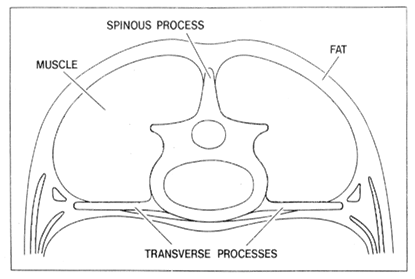
Figure 1. The spinous and transverse processes of the vertebrae in the loin area.
The vertebrae of the spine in the loin area (behind the last rib) have two projections which can be felt (fig. 1). The spinous processes of adjoining vertebrae form the bumpy topline of the back. The transverse processes are the horizontal bones coming out from either side of the backbone. It is the ease with which these processes can be felt that forms the basis for condition scoring.
In practice, condition scoring should be performed as follows (fig. 2):
- Assess the prominence of the spinous processes by running the fingertips down the backbone.
- Assess the prominence of the transverse processes by pushing the fingers down alongside the backbone.
- Assess the amount of muscular and fatty tissue below the transverse processes by passing the fingers under the ends of these bones.
- Assess the fullness of the eye muscle in the angle above and between the spinous and transverse processes.
- Refer to figure 3, give each animal a score and record it so that comparisons can be made between animals and between scoring done at different times.
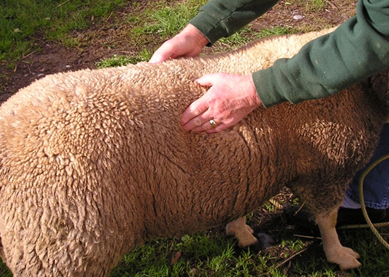
Figure 2. Manually assess the amount of muscular and fatty tissue around the transverse processes.
Condition scoring is a subjective and relative measure of a ewe’s nutritional status, and will require some practice. What one producer calls a score of 3.5 will be another producer’s 3. In addition, ewes should be scored within breed and type. If you are accustomed to score woolen sheep, then you may need some practice to score hair breeds of sheep. One condition score for woolen sheep should be roughly equivalent to 10 kg (22 lb.) or 15% of an animal’s normal mature live weight. While learning the technique, it is useful to check apparent changes in condition by weighing.
The Uses of Condition Scoring
The advantages of condition scoring include the following:
- the skill is easily learned and requires no equipment;
- it can be used to assess the nutrient status of pregnant animals, where live weight is difficult to interpret because of growth of the products of conception.
Condition scoring is used to assess the overall nutritional status of the flock allowing the producer to make management decisions about his feeding program. It can be a particular advantage to the large flock where high-and low-scoring ewes can be separated and fed at different levels.
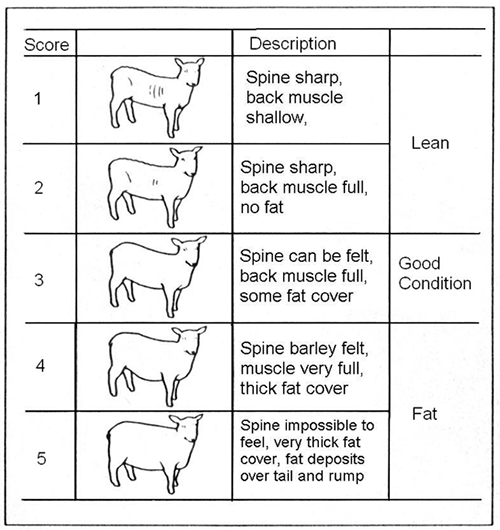
Figure 3. Assign a condition score to each animal.
For example, if ewes are scored three weeks before breeding, those scoring below 3 can be flushed while those scoring above 3 can be fed to achieve a more modest increase in weight.
Condition scoring also allows the producer to identify individual animals in the flock which may be subject to chronic health problems. More often than not, the three to five year old ewe that scores significantly lower than the rest of the flock is a victim of Johne’s disease, caseous lymphadenitis or chronic pneumonia.
Allocating Feed Resources
For efficient production some periods of the ewe’s reproductive cycle demand higher nutrient intake than others. At the same time, it is often the case that a producer has more than single types of forage available. For example, one hayfield which is due for renovation yielded almost straight grass hay which tested at 9.5% CP. The field which was renovated two years ago yielded a crop of hay having a significant content of clover. As a result, it tested at 14% CP. Now, faced with the decision of which hay to feed to the ewes at what time, it should be obvious that the better quality hay should be fed when nutrient demand is high. It would make little sense to feed the better quality hay in early pregnancy, leaving the poor hay for late pregnancy and lactation when protein supplement would be required to bolster its lower feeding value.
Productive ewes are generally in relatively poor condition at weaning (condition score 1.5-2.5) but the target for breeding is 3.5. It is often better practice to allow the ewes to gain weight immediately after weaning when pasture is abundant, then maintain them later as pasture quality declines. Maximum ovulations occur at a condition score of 3.5, whether or not the ewe is gaining weight or simply maintaining it at the time of breeding.
Feed Wasting
Feeding on the ground is associated with extreme waste as well as fecal contamination leading to health problems. It can only be recommended when feed is placed on a clean area, there is little risk of contamination. Figure 4 depicts a typical example of excess feed wastage. Although it is practically impossible to absolutely eliminate wastage of unchopped hay, some producers waste up to 30% of their total resource. Several factors influence waste:
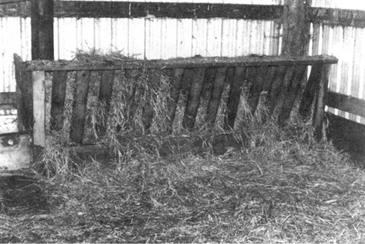
Figure 4. Feed wasted is profit lost.
- Physical Form: Since long hay is largely wasted when animals pull feed out of the feed bunk, chopping will solve this problem. Chopping also reduces the tendency for animals to select leaves in preference to stems. However, chopping requires a significant investment in equipment.
- Feed Bunk Design: The perfect, waste-free feed bunk for long hay has yet to be designed, although some are better than others. In particular those which allow the animals unlimited access to the feed with no impediment to pulling feed out are the most wasteful (fig. 5). Designs which reduce access by using closely spaced slats and prevent backing straight out by using diagonal or tombstone entries have been the most successful in preventing wastage (fig 6).
- Amount of Feed Offered: Although ad lib feeding is recommended for growing lambs, it is usually not necessary in feeding ewes. For example, in early pregnancy, ewes may consume up to 2.5 kg (5.5 lb.) of hay offered ad lib, while their requirements demand an intake of only 1.5 kg (3.3 lbs. – 9% CP ; 55% TDN).
The situation depicted in figure 4 is often a result of overfeeding rather than a particularly poor feeder design. When ewes are offered more than they require, they tend to become increasingly selective. Animals tend to eat the leaves in preference to the stems. When there is abundant feed offered, they will leave the stems behind resulting in significant waste. The solution is to feed an amount sufficient to satisfy the flock’s requirements based upon knowledge of feed quality. This will serve to minimize selectivity and wastage except when the feed is very unpalatable or fibrous as is often the case with very mature, poor quality forages.
Finally, it should be realized that when feed intake is restricted (not fed ad lib) you will need to provide enough feed bunk space for all animals to eat at once (about 18’’ per head for ewes; 12’’ for lambs). In contrast, self-feeders require a provision of only 6’’ per head for ewes (3’’ for lambs). Nevertheless, the investment in increased feeder space is often abundantly returned in saved feed.
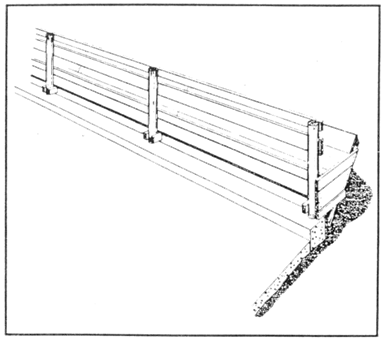
Figure 5. Hay feeders which allow liberal access to feed often promote waste
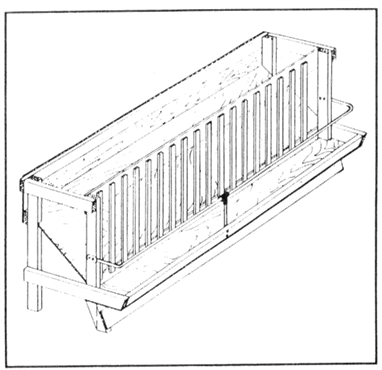
Figure 6. Feeders which restrict access to feed help to reduce waste.
Ration Changes
Digestion of feed in the ruminant is dependent upon a diverse population of bacteria and protozoa in the rumen and reticulum. This population adapts to each specific ration and adaptation requires time while some microbial species expand in number and others decline. Bacteria which break down cellulose are not well adapted to starch digestion. Some microbes produce mainly acetic acid from carbohydrates, others mainly propionic.
When rations are changed, time should be allowed for microbial adaptation. This is particularly true when grain is added to a forage ration. For example, when grain is introduced to ewes before lambing, it should be done in quarter kg (half lb.) increments over the course of a week or more. This results in better feed utilization and prevents digestive disturbances. The latter is often seen when animals accidentally gain access to grain storage. Sudden consumption of large quantities of grain results in the production of high levels of lactic acid in the rumen, lowering the pH and destabilizing the entire fermentation process. Lactic acid enters the bloodstream causing acidosis and bloating may ensue. Recovery may be a prolonged process.
The use of urea in sheep rations also demands a period of adaptation. The proliferation of urease – producing bacteria is a relatively slow process, and unless this is recognized, productivity will suffer because of the inability of the microbial population in the rumen to use urea for protein synthesis.
Mineral Feeding
Some forages and hay are deficient in one or several essential mineral elements. For example forages in Florida are generally deficient copper, cobalt and selenium. In particular, it is assumed without question that cobalt and iodine are universally in short supply, while selenium, copper (both absolutely and relative to molybdenum) and zinc deficiencies often limit animal productivity.
There are three methods of providing mineral supplementation:
- Incorporation in the ration. For example, lambs on full feed may have their mineral requirements added to a complete pelleted formulation. Alternatively, minerals may be incorporated into a supplement pellet designed for use with whole grain. When ewes are being fed grain, minerals may be added as a top dressing. These are ideal methods of assuring adequate intake, but are seldom used because of the expense of having complete rations formulated and the additional labor involved in mixing or top dressing on the farm.
- Provision of mineral with salt free-choice in structure (fig.7) protected for the sun and rain. This is probably the most common method of providing mineral supplementation. However, it is often unsuccessful for one of several reasons:
a. The mineral mix is unpalatable for reasons which are poorly understood; palatability and consumption of a mineral mix can vary from farm to farm.
b. Mineral is often allowed to become fouled by manure because it is poorly placed.
c. The mixture becomes wet, causing it to form into a hard mass and promoting oxidation reactions within the mix, decreasing its feeding value. - Provision of mineral in a mixture with salt. This usually solves the palatability and consumption problem because stock will always consume salt. However, fouling and moisture can still produce problems.
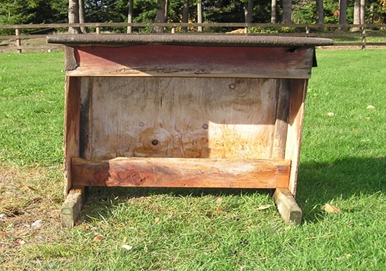
Figure 7. A portable mineral feeder which is easy to keep clean.
In Florida, a complete mineral mix (including salt) has been made available which is designed to overcome the common deficiencies experienced in this area. Where such a custom mix is unavailable, the following recommendations have proven practical:
- Construct a mineral feeder such as that illustrated in figure 7 which will:
a. be portable so that it can be moved from barn to pasture
b. be easy to keep clean
c. be covered to keep the mineral mix dry. - Purchase a mineral mix, preferably one designed specifically for sheep. READ THE LABEL.
- Provide fresh, clean water and locate the mineral feeder close by. Poor quality or insufficient water is definite discouragement to a good appetite.
Administering Vitamins
The only vitamins normally required by sheep are A, D, and E. Green, leafy forages provide adequate quantities when sheep have access to pasture through the year. Forages which have been weathered, heated or stored for prolonged periods are generally deficient. Since all three of these “fat-soluble” vitamins are stored in body tissues, supplementation is required only periodically, the most common method being intra-muscular injection. Vitamin E may also be administered in combination with selenium either:
- to ewes, two to three weeks before lambing begins, or;
- to lambs, at birth, in an attempt to eliminate the occurrence of white muscle disease in the lambs.
Vitamins are also present in most mineral mixes but these should not be considered reliable sources. In the presence of minerals and moisture, the vitamins are rapidly oxidized. Since mineral mixes rapidly take up moisture there can be little assurance that sufficient vitamins are obtained.
Gazing Management
In many operations, grazed forage makes up a significant proportion of total feed intake. The efficiency with which pastures are utilized for animal production is a function of both the pasture itself and the management of the grazing animals. Figure 8 suggests relationships between stocking rates and both animal production per acre and productivity per animal. The main goal of grazing management is to increase the carrying capacity of the pasture (stocking rate) to the point where animal production per acre is maximized without significantly reducing productivity per animal.
Reference:
Masons, B.D., Bactawar, B. (2010). Nutrition Guide for B.C. Sheep Producers. Revision of the Ministry of Agriculture and Lands, 2004.
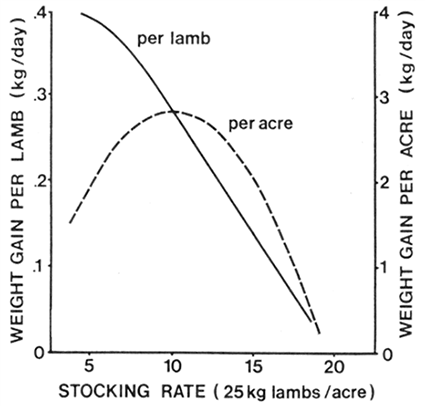
There are many factors which influence pasture productivity and grazing management decisions including: climate, soil fertility, forage species, nutrient requirements of livestock, predator control and many others. It is beyond the scope of this publication to discuss these in detail.
Digestive System of Lambs
By
Basil Bactawar, UF/IFAS County Extension Service
The digestive systems of mammals are broadly divided into two classes:
- Monogastric–meaning one stomach, includes:
human, horse, pig - Ruminant – includes sheep, cattle, goats, deer, bison
In order to understand some of the unique properties of the ruminant system, it will be helpful to briefly discuss the simpler monogastric system.
Monogastric Digestion
An outline of the human system is shown in figure 1. Food, upon entering the mouth, is subdivided by chewing. At the same time lubricating digestive juices containing enzymes are secreted from the salivary glands. These particular enzymes are responsible for initiating the breakdown of starches.
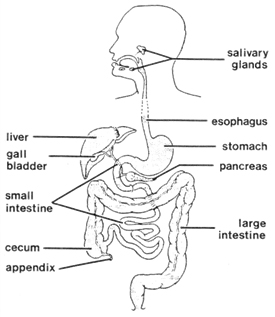
Figure 1. The human digestive system.
Food, now mixed with these secretions, passes down the esophagus into the stomach, where the digestion of protein, fats and oils is initiated by acid and other specific enzymes. In monogastrics, the stomach also serves as a reservoir for food which has been rapidly ingested.
When the initial stages of digestion in the stomach are completed, the contents pass into the small intestine. Here, bile from the liver and gall bladder, as well as enzymes from the pancreas is added. Breakdown continues as the digesta travel the 10-20 meter length of the small intestine, while at the same time the products of digestion are absorbed into the bloodstream.
Enzymatic breakdown of most of the organic constituents of food is complete by the time the unabsorbed digesta reach the large intestine. One of the main functions of this part of the system is the absorption of water and minerals of both dietary and secretory origin. In addition, further breakdown is carried out here by a permanent population of microbes (bacteria and protozoa) with some proportion of the products being absorbed into the blood. Food material which has escaped both enzymatic and microbial digestion is excreted.
Some monogastrics, like the horse and rabbit, have a relatively large capacity for microbial digestion in the large intestine and cecum. Table 1 compares the size of several parts of the both ruminant and monogastric digestive systems. Notice that where the large intestine and cecum make up only 19% of the digestive system in the human, they represent over 60% of the total volume in the horse. The implications of this will become clear when we discuss microbial digestion in the ruminant.
Table 1. A comparison of the relative sizes of digestive tract compartments in adult animals.
|
Digestive |
Volume as % of Total Digestive Tract |
||||
|
Cattle |
Sheep |
Horse |
Pig |
Human |
|
|
Rumen |
56.9 |
52.9 |
|
|
|
|
Reticulum |
2.1 |
4.3 |
|
|
|
|
Omasum |
5.3 |
1.7 |
|
|
|
|
Abomasum |
6.5 |
7.7 |
|
|
|
|
Total Stomach |
70.8 |
66.6 |
8.6 |
29.2 |
18.8 |
|
Small Intestine |
18.5 |
20.5 |
30.2 |
33.3 |
62.4 |
|
Caecum |
2.8 |
2.6 |
15.9 |
5.6 |
|
|
Large Intestine |
7.9 |
10.3 |
45.3 |
31.9 |
18.8 |
|
Total Capacity |
356.0 |
44.0 |
211.0 |
28.0 |
6.0 |
The Sheep’s Digestive System
The main feature which distinguishes our own digestive system from that of the sheep is the complex stomach shown in figure 2. The first two sections, the rumen and reticulum comprise a large fermentation compartment. Ingested feed passes rapidly, with very little chewing, down a muscular esophagus into the rumen. Later, boluses (cuds) of feed are regurgitated, broken down by chewing and mixed with saliva. The sheep, in fact, produces large volumes of saliva, perhaps up to 25 liters per day. The absence of adequate fiber in the ration to permit cud formation may account for the wool picking and wood chewing which is sometimes seen in lambs on concentrate rations.
On entering the rumen, feed is immediately subjected to microbial digestion. An extremely varied population of bacteria and protozoa (figure 3) attach themselves to the feed and begin the breakdown process. This is facilitated by the secretion of enzymes onto the feed and into the fluid contents of the rumen. It should be noted that the microbial population which becomes attached to a particle of grain will be quite different from that which attaches to a forage leaf. This has important implications when changes in ration are contemplated. A slow transition is necessary to allow time for alternations in microbial populations. If there is no slow transition, then it may lead to digestive upset in the animal. The lining of the rumen is like pile carpet having innumerable small, flat projections called papillae. These serve two main functions. They vastly increase the area for absorption of nutrients and they also provide attachment sites for additional populations of bacteria. Figure 4 is an electron photo-micrograph of bacteria attached to rumen papillae. These bacteria, like the ones attached to feed particles, produce enzymes which are secreted into the fluid contents of the rumen. One of the important contributions of this particular population is the enzyme urease which is responsible for the breakdown of urea. Feed, then, is subjected to digestion both by enzymes dissolved in the general surrounding of the rumen and, more specifically, by those produced by attached microbes.
Continual mixing of rumen contents is essential to efficient fermentation. The muscular walls of the rumen and reticulum produce waves of contraction traveling their combined lengths at about half-minute intervals. This process, in addition to mixing the rumen contents, facilitates both regurgitation for further “cud-chewing” and belching, which releases gases produced by fermentation (mainly hydrogen and methane). Under some conditions (eg. grain overload) the muscular walls may stop contracting resulting in rumen stasis, which can place the animal at serious risk of bloating.
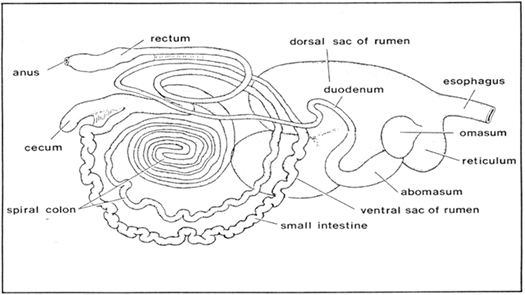
Figure 2. The digestive system of the sheep.
After the feed has been sufficiently chewed and broken down by microbial action, the digesta enters the omasum. Flow into this third segment of the ruminant stomach is regulated by a small opening called a reticulo-omasalorifice which prevents large particles from leaving the rumen. It is the small caliber of this orifice which makes it possible for sheep to utilize whole grains. The larger orifice in cattle allows particles the size of whole grain to pass into the lower gut and be excreted.
The omasum itself is a muscular organ which is thought to have two main functions. The first is the extraction of water from the rumen fluid yielding a product for further digestion which has a significantly higher proportion of dry matter. Secondly, the omasum serves as a pump, propelling digesta from the rumen and reticulum into the fourth segment of the stomach, the abomasum.
The ruminant abomasum is analogous to the true stomach of the monogastric with its digestive processes being very similar to those described earlier for the human. Digestion and absorption of its products progress as the digesta passes down the small intestine.
The large intestine and cecum of the sheep represent only about 12% of the total volume of its digestive system. This may seem quite insignificant in comparison with the horse (table 1). However, fermentation in this area can make a significant contribution to overall digestion.
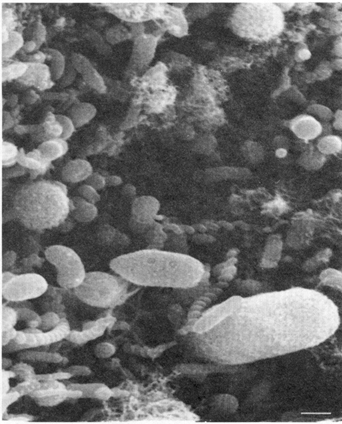
Figure 3.The varied population of bacteria and protozoa found attached to feed particles in the rumen and reticulum.
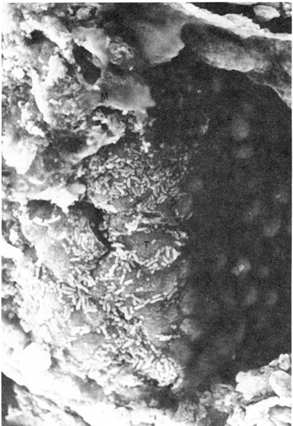
Figure 4. Bacteria attached to the lining of the rumen.
Development of the Ruminant Stomach
At birth, the lamb’s rumen and reticulum have a capacity roughly equal to that of the abomasum (figure 5). They contain no micro-organisms and, as a consequence, are not capable of functioning as they do in the adult. Bacteria begin to populate the rumen shortly after birth as the lamb begins to nurse and explore its environment. However, it takes several weeks before a stable microbial population is established which is capable of efficient digestion.
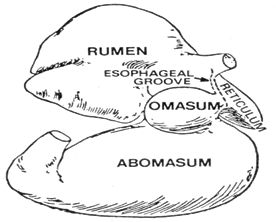
Figure 5. The stomach of the newborn lamb.
By inoculating the rumen and reticulum with a more appropriate microbial population, the digestive tract can be protected from the adverse effects of such contaminants through competition.
The second reason for attempting to establish a functional population is to hasten the ability of the rumen and reticulum to digest solid feed. This would make it possible to wean lambs earlier, a particular advantage when accelerated lambing is being attempted.
The Esophageal Groove
Since the rumen and reticulum are non-functional in the newborn lamb, a mechanism has evolved which allows milk to flow directly to the omasum. A reflex reaction causes a muscular fold on the wall of the reticulum to form a closed tube leading from the end of the esophagus to the reticulo-omasal orifice (figure 5). This fold is called the esophageal groove and an appreciation of its function will affect some of the management aspects of feeding newborn lambs.
The esophageal groove closes in response to behavioral stimuli associated with the ingestion of liquid feed such as nursing from the ewe or feeding from a nipple pail. Even the sight of a nipple bottle may elicit the response in an orphan lamb. The reflex, however, requires some degree of training. Therefore, it is used to best advantage when feeding routines are well established.
If at all possible, weak newborn lambs should be encouraged to suckle either from the ewe or from a bottle. Although feeding by stomach tube may be the only alternative in many cases, this will invariably result in milk being deposited in the reticulum. A similar situation arises when milk is ingested too rapidly to be accommodated by the esophageal groove. This can occur when milk replacer is fed from a bottle or from the bottom of a nipple pail where a round-holed (rather than a cross-cut) nipple is used.
Milk which finds its way into the rumen and reticulum is subjected to fermentation by bacterial contaminants early in life. Such fermentation may result in significant gas production resulting in a typical pot-bellied lamb. The young lamb cannot expel this gas efficiently since the belching mechanism is poorly developed.
Lambs being fed through a rubber nipple should be encouraged to suck. Frequent feedings of small volumes are usually more successful than large volumes fed infrequently.
Effect of Feeding Management
Between birth and maturity, the rumen and reticulum increase tenfold in volume in relation to the abomasum; the rate at which this proceeds can be significantly altered by nutritional management.
Most newborn lambs show little interest in consuming solid feed before they are two or three weeks of age. Consequently, until that time they must be nourished exclusively by milk or milk replacer. After this time it is possible to accelerate rumen development through feeding practices.
The closure of the esophageal groove only occurs when liquid feed is ingested. Therefore when solid feed is consumed it travels directly to the rumen where it is fermented to produce volatile fatty acids. The presence of volatile fatty acids (VFA) has a direct effect on rumen development and, furthermore, higher rates of VFA production will accelerate this development. These observations have a direct bearing on management practices in feeding young lambs.
Creep feeding has become common practice in most successful sheep operations. The aim is to provide palatable, high quality solid feed to encourage consumption as early in life as possible. Restriction of milk intake after solid feed consumption is well established. This further promotes the intake of creep ration. The higher the quality and the greater the quantity consumed, the higher will be the rate of VFA production and the more rapid will be the rate of rumen development. Creep feeding is an essential practice in maximizing lamb growth potential through increasing the ability of the lamb to consume nutrients. It also facilitates early weaning in accelerated lambing systems.

